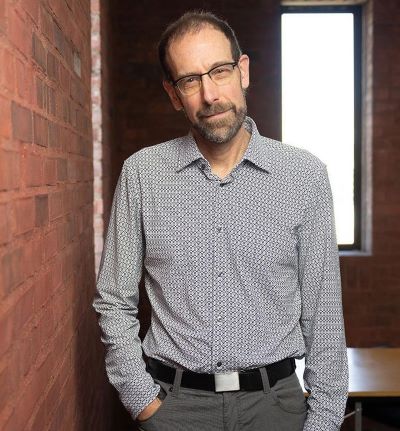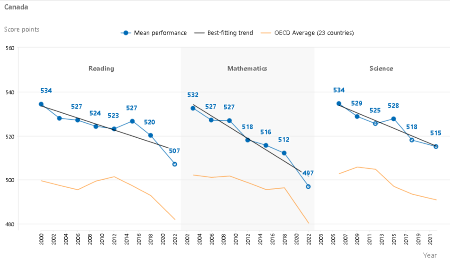Canadian scientist and environmentalist David Keith on the energy transition and “Big Oil”
 The innovative Canadian carbon removal company he founded was sold for more than $1 billion to a U.S. oil giant. But that doesn’t mean scientist and environmentalist David Keith (photo at right) necessarily trusts “Big Oil” to do the right thing on climate change.
The innovative Canadian carbon removal company he founded was sold for more than $1 billion to a U.S. oil giant. But that doesn’t mean scientist and environmentalist David Keith (photo at right) necessarily trusts “Big Oil” to do the right thing on climate change.
Keith founded Carbon Engineering and did some of his pioneering work on the company’s direct air capture technology while a professor at the University of Calgary, when he was recognized as one of Time magazine’s “Heroes of the environment” in 2009.
“I have concerns about Big Oil. I don’t trust Big Oil’s view on climate, because of the powerful self-interests that push them against climate change,” Keith, who left Harvard University last April and is now a professor of geophysical sciences at the University of Chicago, told a January 24 Transition Accelerator webinar, “Last Gasp or Leading Edge? Carbon Removal and Legacy Oil.”
The Transition Accelerator, a pan-Canadian charitable organization, works to identify and advance pathways that lead to net-zero greenhouse gas emissions by 2050.
Keith said trusting the global oil industry isn’t the issue when it comes to transitioning to net zero-carbon energy and reducing greenhouse gas emissions to prevent catastrophic climate change. “I think the issue is really about power and money and their [the oil industry’s] relationship to technology and the likely outcomes. The issue is about the structural dynamics of the oil industry.”
Throughout history, incumbent industries have always wanted to dominate the niches they’re in, rarely pivot to follow new technologies, and “will fight with legal tools and illegal tools to protect their interest,” Keith said.
He noted that when he was a young post-doctoral researcher in the 1990s, he was the target of a “pretty ugly and powerful” disinformation campaign by Exxon Oil.
Keith said Carbon Engineering is now part of Occidental Petroleum’s Low Carbon Ventures unit, which supports innovative projects by numerous industries to reduce carbon dioxide emissions. “It is a top-level business unit that was started inside Occidental, which other oil companies didn’t do.”
Through the acquisition, Occidental subsidiary 1PointFive has partnered with Carbon Engineering to build the STRATOS direct air capture (DAC) facility in the Permian Basin oilfield in Texas. The facility – which will be the largest of its kind in the world – is designed to extract and permanently remove 500,000 tonnes of atmospheric CO2. Expected to be operational in mid-2025, the facility is laying the foundation for commercial-scale DAC deployment, Occidental says.
Keith pointed out, however, that even if things go great for Carbon Engineering at Occidental, “then there’s going to be immense pressure from the investment community to divide those things [the oil company business from the carbon removal business] because the investment community, the big investors, are going to say, ‘We want a pure play, we don’t want a conglomerate. Conglomerates don’t work very well.”
Nevertheless, the global transition toward net-zero energy “isn’t really [about] the power of oil companies,” Keith emphasized. “I think this is the power of the environmental movement driving change just the way we [who are concerned about climate change] want it.”
Keith wanted to keep Carbon Engineering in Canada
James Meadowcroft, transition pathway principal at the Transition Accelerator and professor in Carleton University’s School of Public Policy and Administration, moderated the webinar. Meadowcroft noted that being acquired by a foreign entity is often the fate of many innovative scaling Canadian companies, and he wondered why Keith chose to sell the company he founded to a U.S. firm.
Keith, a Canadian citizen whose home is in Canmore, Alberta, acknowledged that he’s “not happy” Carbon Engineering was sold to a U.S. company.
“If we’d had a serious offer from Canada – if we’d had two offers and the Canadian offer was even close, I would have been pushing and voting for that,” he said. “But there wasn’t [a Canadian offer]. There just wasn’t a Canadian player who was serious the way Occidental was.”
Even in Canada, when Carbon Engineering was doing its pioneering R&D work in Calgary, the company relocated to Squamish, B.C. because “British Columbia was super-supportive. Alberta really was not supportive, neither government nor industry,” Keith said.
Through Occidental’s acquisition, Carbon Engineering (CE) and its employees will remain in Canada, he said. “I think it will actually be a lot more money for CE in R&D in the Vancouver and Squamish area, so I’m really excited about that.”
In Canada, the only private sector effort akin to Occidental’s significant investment and multiple initiatives in the energy transition is a plan by the Pathways Alliance, a group of six Alberta oilsands companies with a goal to reduce greenhouse gas emissions from oilsands production to net-zero by 2050, and which has proposed building a $16.5-billion carbon capture and storage project. The project involves constructing a pipeline to transport carbon from 20 separate carbon capture facilities at oilsands sites in northern Alberta to an underground hub near Cold Lake for safe storage.
Pathways Alliance had previously stated its intention to apply for regulatory approval last fall, with the goal of putting its first purchase orders for pipe in early 2024. However, the Alliance hasn’t done that and has yet to make a final investment decision on the project, despite both the federal and the Alberta governments offering financial incentives for carbon capture, utilization and storage.
Last August, Rich Kruger, who took over in spring 2023 as CEO of oilsands producer Suncor Energy, said he believes the company has been too focused in recent years on the energy transition and must get back to an oil-centred business strategy to make money for shareholders today. In 2022, Suncor sold off its wind and solar power assets, getting out of the renewable energy business it had been involved in for more than two decades.
In contrast, with Vicki Hollub, Occidental’s president and CEO at the helm, the oil company plans to shift toward a carbon-neutral production model and has called for U.S. federal legislation aimed at boosting carbon capture.
“It’s interesting to ask why there’s no equivalent of Vicki Hollub in Canada who really pushed their companies [to significantly invest in the energy transition] in the way that Vicki has done,” Keith said. “I think it speaks to challenges in the Canadian economy about executing that way.”
Canada’s innovation ecosystem has structural flaws
Meadowcroft asked Keith what the federal and provincial governments could do to retain innovative cleantech companies and their talent, intellectual property and revenue in Canada.
Keith said he didn’t think the problem was sufficient money or talent. “I think there’s a fair amount of money in the Canadian university system, although now there’s less and there should be more. I don’t think it’s about talent. Canada actually has really great K through 12 education, in many ways better than the U.S.”
However, there are some structural reasons why Canada’s university system and innovation ecosystem underperform, Keith said. Other countries comparable to Canada, in the sense of being more equitable and fair compared with the “big inequalities” seen in the U.S., have the ability to concentrate resources and innovation in a more effective way, he said.
Germany, for example, with its Max Planck Society and Fraunhofer institutes, is able to focus immense power and money in one place on a science or technology topic, Keith said. “Canada doesn’t seem to be able to do that. There’s always this ‘spread it [government funding] all around.”
“The thing that doesn’t work is that you have a bunch of little individual investigator grants spread across the country for one line of technological evolution,” he added. “Canada is only 40 million people. We’re competing on a world stage. We need to accept that for some of these things [emerging technologies] there should be one place in Canada where it happens.”
When it comes to carbon removal technologies, Keith said there is some excellent work being done at Dalhousie University on “ocean alkalinity enhancement.” It involves dispersing a mildly alkaline substance, similar to antiacids taken for indigestion, into the ocean. The aim is to increase the ocean’s natural ability to draw down and retain CO2 from the atmosphere.
A partner on Dalhousie’s multidisciplinary “Ocean Alkalization Project” (featured in a November 2023 article in Science magazine) is Planetary Technologies. The Halifax-based startup in 2022 won US$1 million in the carbon removal XPRIZE, a competition funded by Elon Musk’s foundation to encourage ideas for removing CO2 from the air.
Keith also pointed to pioneering work being done by Greg Dipple and colleagues at the University of British Columbia on technology to accelerate the naturally occurring reaction of rock mine tailings waste with carbon dioxide, thereby mineralizing and permanently keeping CO2 out of the atmosphere.
Vancouver-based Arca (previously Carbin Minerals), a UBC spinoff which Dipple co-founded with UBC geologist colleagues Bethany Ladd and Peter Scheuermann, also won US$1 million last year in the Musk Foundation’s XPRIZE competition. Last year, ARCA made the Foresight 50 list of Canada’s most investible cleantech ventures.
Decarbonizing must consider environmental and social constraints
Direct air capture technology, in addition to removing CO2 from the air and permanently storing the greenhouse gas underground, can also be used to make carbon-neutral synthetic fuels for decarbonizing transportation.
Asked about oil companies capturing CO2 and using it in enhanced oil recovery operations to extract more oil, Keith said “there are some people who think it’s inherently evil because you’re playing with the devil if you do that.”
However, his view is that if the number of carbon atoms in CO2 injected into oil reservoirs equals the number of carbon atoms in the recovered oil, then the net amount of CO2 going into the atmosphere is zero. “I see no problem with that environmentally as one of the niche ways to produce carbon-neutral, higher-energy density fuels.”
“The central job isn’t to put the oil industry out of business,” Keith said. “The central job is to put carbon emissions out of business – and that’s a different job.”
Keith described himself as “an old-fashioned environmentalist” who wants to manage the climate problem and also reduce humans’ footprint on the landscape.
Many people believe the way to do this is to live in a way our ancestors lived, “which they imagine to be in balance with nature, although I think that’s not really the history of humans interacting with nature,” he said.
Along this line of thinking, many people also believe that local community agriculture or small-scale agriculture results in a smaller land footprint than giant, industrialized farms – which it does – “but it’s not a lesser footprint per unit of agricultural production,” Keith said. A lot of the older ways that humans used to do things, in agriculture, forestry and fisheries, actually had bigger environmental footprints per unit of production, he noted.
Similarly, using wind power, biomass energy and hydroelectric power, even though they’re all clean energy sources, “are all in some sense terrible in terms of land footprint,” because they’re low-density energy sources, in terms of watt of energy produced per square metre, Keith said.
For example, he considers the Site C hydroelectric dam in B.C. to be “a giant policy and environmental failure.” The massive dam is flooding beautiful and valuable valley bottom land for a project that costs more than $10,000 per kilowatt-hour of electricity produced, he said.
On the other hand, solar and nuclear power both require a much smaller footprint on the landscape for the higher-density energy they produce, Keith said. “I see solar and nuclear as the dominant pathways in a high-energy, low environmental footprint world.”
For the world’s poorest 4 billion to become a lot richer, and to have a world with the level of consumption that will require but with a much lower environmental footprint, “I think the only way is intensification, is technologies that allow you to get more out of less land,” he said.
“The tradeoffs are real and we have to start counting those tradeoffs as we think about decarbonization,” Keith said. “We need to decarbonize within environmental and social constraints.”
See also: Direct air capture technology is no panacea for reducing GHG emissions, say experts
R$
Events For Leaders in
Science, Tech, Innovation, and Policy
Discuss and learn from those in the know at our virtual and in-person events.
See Upcoming Events
You have 0 free articles remaining.
Don't miss out - start your free trial today.
Start your FREE trial Already a member? Log in
By using this website, you agree to our use of cookies. We use cookies to provide you with a great experience and to help our website run effectively in accordance with our Privacy Policy and Terms of Service.





